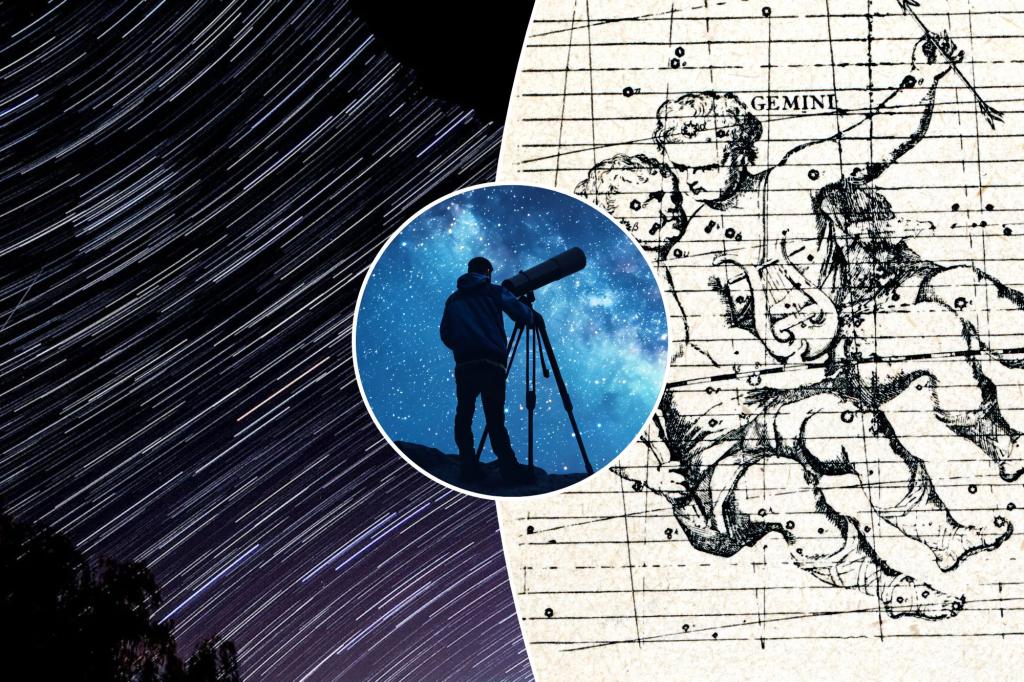The Geminid meteor shower, renowned as the most dependable and captivating annual celestial display, graces our skies once again. While this year’s spectacle coincides with a nearly full moon in Gemini, potentially diminishing the visibility of fainter meteors, the brilliance of the Geminids promises a worthwhile viewing experience, with the brightest meteors still piercing through the lunar glow. These fleeting streaks of light, originating from the debris left behind by celestial bodies, offer a breathtaking reminder of our connection to the cosmos.
Meteors, often referred to as “shooting stars,” are born from the remnants of comets and asteroids. As these celestial wanderers journey around the sun, they leave a trail of dust and debris in their wake. When Earth’s orbit intersects these trails, the particles collide with our atmosphere at high speeds, burning up due to friction and creating the dazzling streaks of light we observe as meteors. The Geminids, however, stand apart as they originate not from a comet, but from the asteroid 3200 Phaethon, adding to their unique character. Unlike the colorless or white appearance of most meteors, the Geminids add a splash of color to their performance, often appearing with a yellow or greenish tinge.
The Geminids derive their name from the constellation Gemini, the apparent point of origin for these luminous streaks. Emerging from the eastern horizon shortly after nightfall in December, the Geminids offer an early evening spectacle, unlike some meteor showers that require late-night or pre-dawn viewing. This year’s peak activity is anticipated during the night of December 13th and into the early morning hours of December 14th, with the greatest frequency of meteors expected around 2 a.m. While the radiant lies within Gemini, the meteors themselves can appear anywhere in the night sky, adding an element of surprise to the viewing experience.
The constellation Gemini, associated with the mythological twins Castor and Pollux, adds a layer of symbolic meaning to the Geminid meteor shower. These inseparable brothers, one mortal and the other immortal, embody the themes of loyalty, sacrifice, and unbreakable bonds. Castor, son of King Tyndareus, and Pollux, son of Zeus, were renowned for their bravery and adventures. Upon Castor’s death in battle, Pollux, overcome with grief, pleaded with Zeus to grant his brother immortality. Zeus, in a compromise, placed both brothers among the stars, forever united in the constellation Gemini. The Geminids, emanating from this constellation, serve as a reminder of the enduring power of connection and the cyclical nature of existence – from stardust we are formed, and to stardust we shall return.
The source of the Geminids, the asteroid 3200 Phaethon, presents an intriguing puzzle for astronomers. Unlike most meteor showers originating from comets, which are essentially “dirty snowballs” composed of ice, dust, and rock, asteroids are primarily rocky bodies. Phaethon, however, blurs the lines between these two classifications, leading some scientists to speculate that it might be a “dead comet” – a comet that has exhausted its volatile ices – or a novel type of celestial object termed a “rock comet.” Regardless of its true nature, Phaethon’s debris creates the spectacular Geminid meteor shower, a captivating annual event.
To fully appreciate the Geminid meteor shower, seeking out dark skies far from city lights is essential. The brilliance of the full moon this year poses a challenge, but by facing away from the moon towards the darkest part of the sky, you can maximize your chances of witnessing the vibrant streaks of the Geminids. Allow your eyes around 30 minutes to adapt to the darkness, and resist the temptation to check your phone, as the bright screen can disrupt your night vision. Dress warmly, bring a comforting beverage, and settle in for a celestial spectacle. If you miss the peak, don’t despair; the Geminids continue to grace the sky until Christmas Eve, offering further opportunities to connect with the cosmos. As you gaze upwards, make a wish, and marvel at the grand cosmic dance playing out above.










